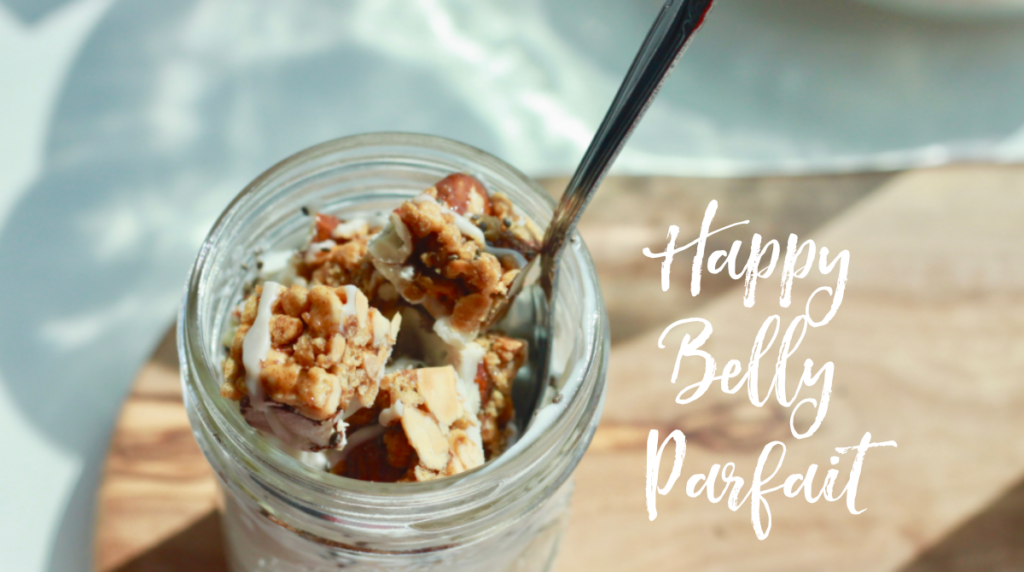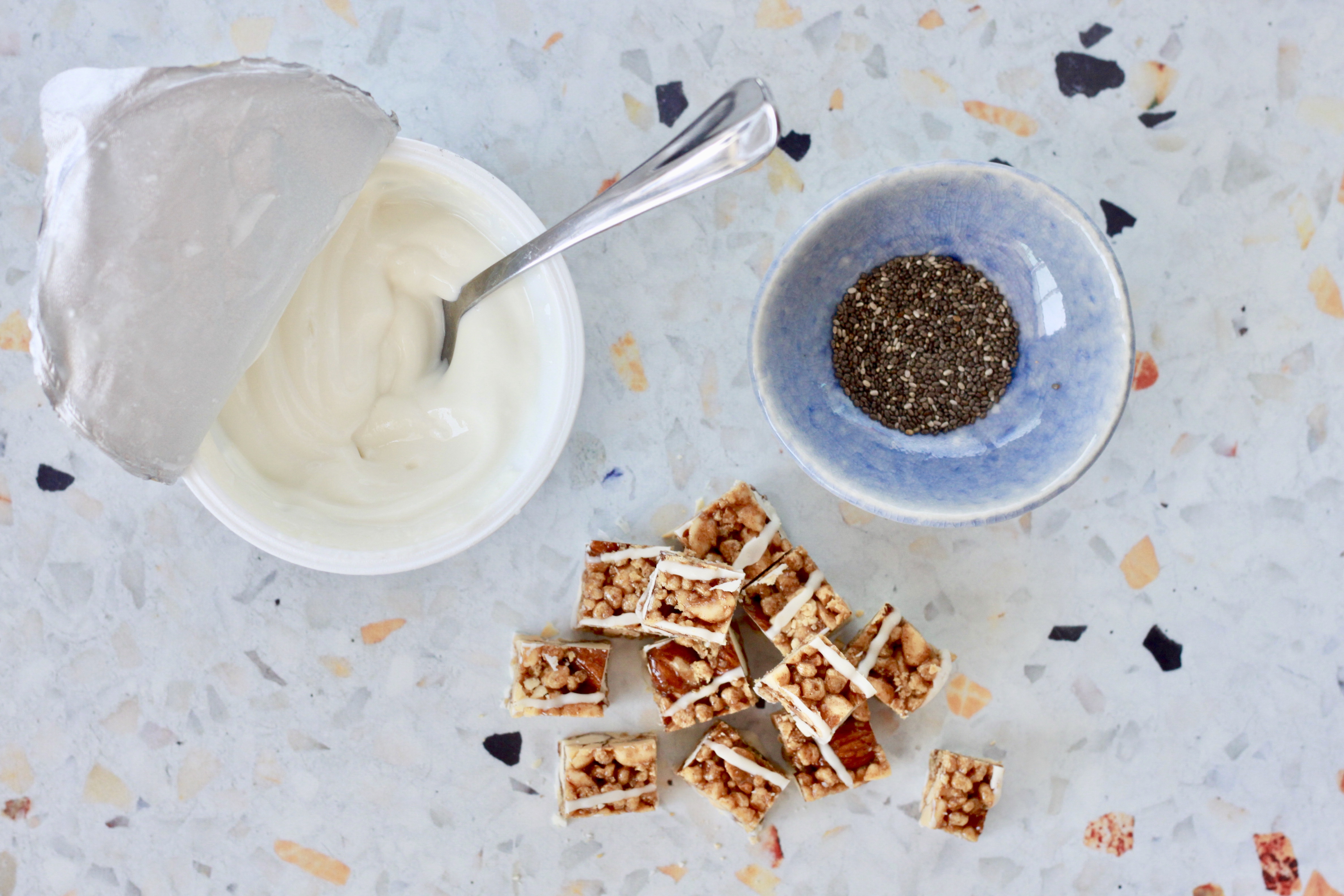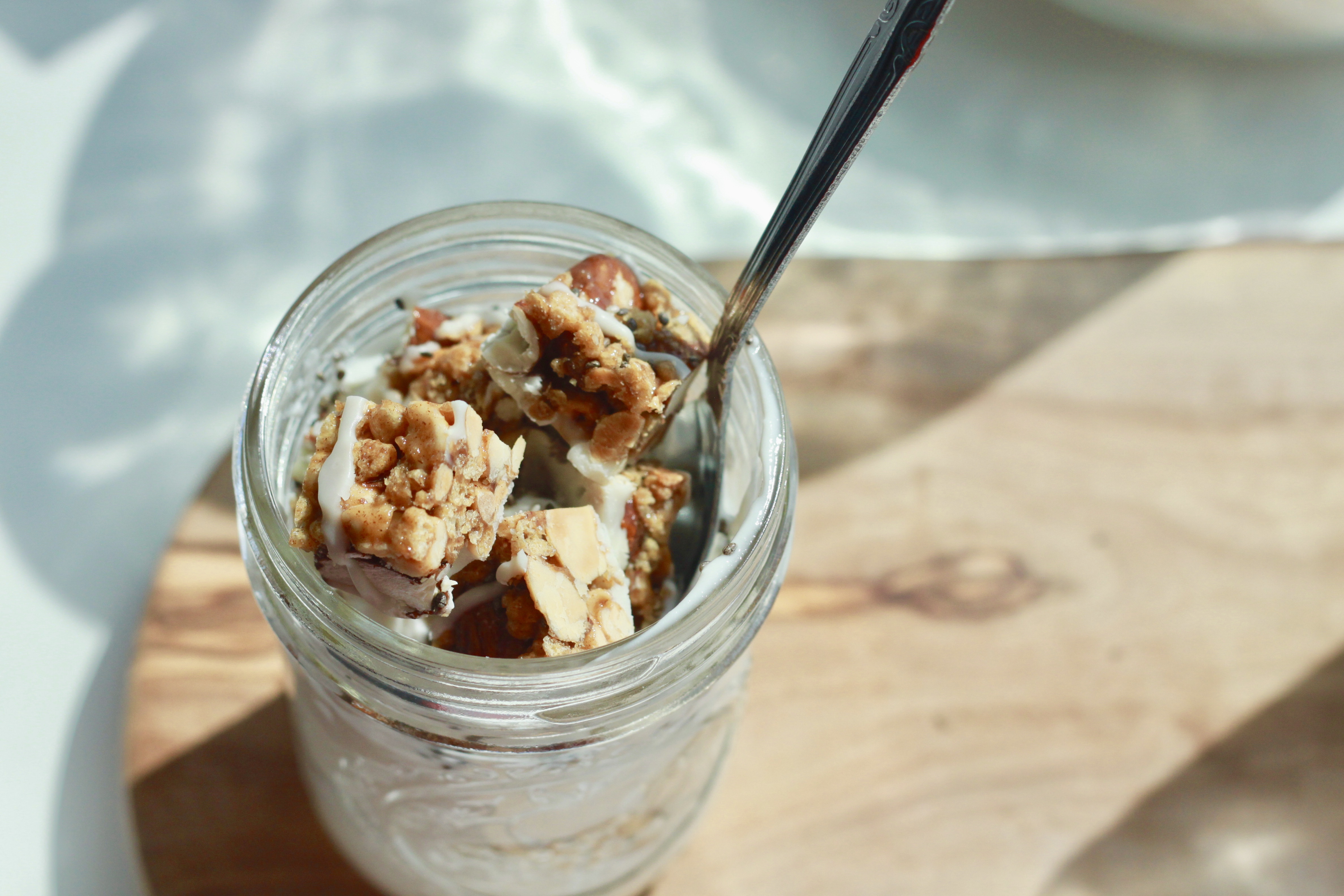Recipe: 3 Ingredient Happy Belly Parfait

Gut health is all the rage in health trends. Dietitians care so much about your gut because it’s where digestion and nutrient absorption occur. This health “trend” will probably stick around for some time, though, since research indicates that our gut health can affect so many other aspects of our overall wellbeing. This includes weight management, mental health, and disease progression.
Our gut, or gastrointestinal tract, is home to trillions of microbes. The balance of microbes, or our gut “microbiome”, is what affects our systemic health. Just like any ecosystem of living creatures, there are good and bad guys that can make their environment happy and healthy, or quite sad and not ideal.
What makes your gut healthy? Intuitively, the more good microbes you’ve got, the better! If you have an imbalance, where there may be more bad guys than good guys, chances are you’ve experienced some pain, bloating, gas, or other uncomfortable GI issues.
Keep in mind, though, that you can still have an imbalance of gut microbes even if you’re not bellyaching after each meal. You may be dealing with a microbial gut imbalance and seeing other symptoms: fatigue, immunity, and a wonky mood. Therefore, it’s never a bad idea to fortify your gut with beneficial microbes to keep you healthy and happy!
See below for a simple Happy Belly Parfait recipe that you can use for a snack or a dessert that uses familiar ingredients that your gut will love!
3 Ingredient Happy Belly Parfait
Serves 1
Ingredients:
- 1 container of Oikos Triple Zero Yogurt (vanilla recommended)
- 1 KIND Bar (white chocolate cinnamon almond recommended)
- Pinch (¼ tsp) chia seeds
Optional polyphenol-rich toppings:
- Handful of blueberries
- Dusting of cocoa powder
- Dark chocolate KIND bar
Directions:
- Chop the KIND bar into bite-sized cubes
- In a mason jar, layer chilled yogurt, KIND Bar bites, and half of the chia seeds.
- Repeat layer.
- Chill for 5 minutes to set the ingredients or enjoy immediately.
- Pat your belly and thank your gut microbiome for keeping you healthy!



This recipe is high-fiber, high-residue, and high-FODMAP, and also contains lactose and casein. Since all of our gut microbiomes are different, remember that your gut may respond differently. If you are following a low FODMAP diet, note that these are foods you want to avoid until you’ve reestablished tolerance or reintroduced higher FODMAP ingredients, specifically the ones listed. If you have diverticulitis, it is best to avoid high fiber and high residue ingredients, like the ones listed in this recipe. If you have lactose intolerance, seek out a dairy-free yogurt alternative. The same may be true if you are avoiding dairy due to an autoimmune disorder.
Remember: talk to your dietitian if you have any concerns about what is best for your gut health! A Summerfield RD will always customize their recommendations based on what is best for you and your health.

